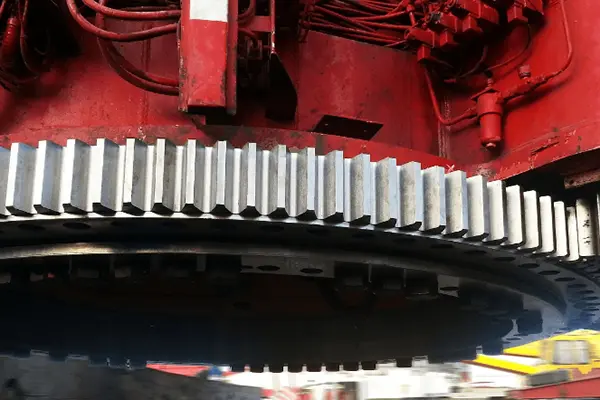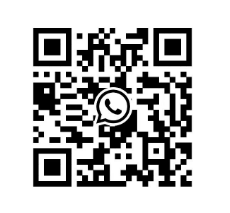
What is the Alternative to a Slew Ring?
2024-12-18
Slew rings, also known as slewing bearings, are critical components used in heavy machinery to support axial, radial, and tilting moment loads. Commonly found in equipment like cranes, excavators, wind turbines, and rotary platforms, slew rings enable smooth rotational movement. However, due to cost, maintenance, or specific design requirements, alternatives to slew rings may be sought in certain applications.
This article explores the available alternatives to slew rings, their advantages, and the scenarios in which they might be used.

What is a Slew Ring?
Before exploring alternatives, it’s essential to understand what a slew ring is and its role. A slew ring is a large, rotational bearing designed to support heavy loads and allow for smooth rotational movement between two structures. It typically comprises:
- Inner and Outer Rings: To handle loads and house mounting holes.
- Rolling Elements: Usually ball bearings or cylindrical rollers.
- Seals and Lubrication: To protect against contaminants and ensure smooth operation.
While highly effective, slew rings can be expensive and require regular maintenance, which can lead to downtime. As a result, alternatives may be considered based on the application.
Alternatives to a Slew Ring
Depending on the specific requirements of the machinery or structure, several alternatives to slew rings may be used:
1. Crossed Roller Bearings
Crossed roller bearings are a common alternative to slew rings, particularly in applications requiring high precision and compact design.
Features and Benefits:
- Cylindrical rollers are arranged in a cross pattern.
- High load capacity for axial, radial, and tilting moment loads.
- Compact and lightweight design compared to traditional slew rings.
- Excellent for applications requiring precision, such as robotics and medical equipment.
Limitations:
- Not suitable for very large loads or extreme environmental conditions.
2. Lazy Susan Bearings
Lazy Susan bearings, often used in turntables and smaller equipment, are a cost-effective alternative to slew rings.
Features and Benefits:
- Typically consists of two circular plates separated by bearings.
- Easy to install and maintain.
- Affordable for light to medium-duty applications.
- Commonly used in display stands, furniture, and small rotating platforms.
Limitations:
- Limited load-bearing capacity compared to slew rings.
- Not suitable for heavy industrial applications.
3. Tapered Roller Bearings
Tapered roller bearings are designed to handle high radial and axial loads simultaneously, making them a suitable replacement in specific applications.
Features and Benefits:
- High durability and load capacity.
- Ideal for applications with combined axial and radial loads.
- Widely available and cost-effective for industrial use.
Limitations:
- Limited rotational flexibility compared to slew rings.
- Require more complex assembly and alignment.
4. Plain Bearings (Bushings)
Plain bearings, also known as bushings, are a simpler alternative to slew rings for low-speed and low-load applications.
Features and Benefits:
- Simple design with no rolling elements.
- Cost-effective and low-maintenance.
- Suitable for rotational or sliding movements in lighter equipment.
Limitations:
- Cannot handle high loads or provide smooth rotation for heavy-duty machinery.
- Increased friction compared to rolling-element bearings.
5. Gear-Driven Rotary Mechanisms
In some cases, a gear-driven rotary mechanism can replace a slew ring. These systems use gears to provide rotational motion between two components.
Features and Benefits:
- High torque capability.
- Ideal for applications requiring controlled and precise motion.
- Robust and durable in heavy-duty machinery.
Limitations:
- Complex design and assembly.
- Higher cost compared to other alternatives.
6. Hydraulic Swivels
Hydraulic swivels can replace slew rings in equipment requiring limited rotation and fluid transfer.
Features and Benefits:
- Allow fluid to pass between rotating components while enabling motion.
- Suitable for hydraulic systems in excavators and other machinery.
- Compact and robust for medium-duty applications.
Limitations:
- Limited rotational range compared to slew rings.
- Not suitable for purely mechanical rotation.
Choosing the Right Alternative
When selecting an alternative to a slew ring, several factors need to be considered:
- Load Requirements: Understand the axial, radial, and moment loads the component must handle.
- Rotational Speed: Choose an alternative capable of providing smooth motion at the required speed.
- Environmental Conditions: Consider temperature, contaminants, and moisture levels in the working environment.
- Cost and Maintenance: Evaluate initial costs, maintenance requirements, and long-term reliability.
- Space Constraints: Ensure the chosen alternative fits within the design’s dimensional limitations.
Conclusion
While slew rings are highly versatile and reliable, alternatives like crossed roller bearings, lazy Susan bearings, tapered roller bearings, plain bearings, gear-driven mechanisms, and hydraulic swivels can provide effective solutions for specific needs. Each alternative offers unique benefits and limitations, making it crucial to evaluate the requirements of your application before deciding.
Whether you’re looking for cost savings, lower maintenance, or a compact solution, understanding these options ensures you choose the best replacement for a slew ring in your machinery or equipment.





